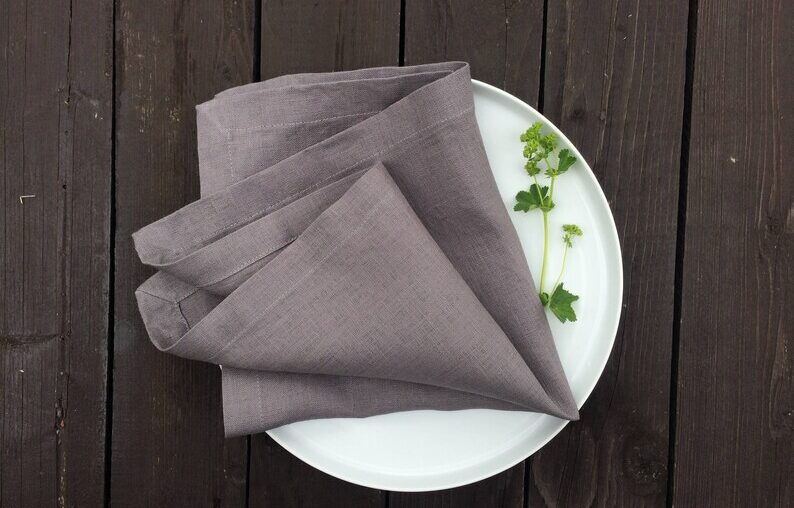Napkins are an essential part of dining and hospitality, serving both functional and aesthetic purposes. They come in various materials, designs, and textures, catering to different occasions and preferences. Whether used in casual home settings, fine dining establishments, or large events, napkins play a crucial role in maintaining hygiene and enhancing table presentation. Understanding the different types of napkin materials and their significance helps in making informed choices for any setting.
The Evolution of Napkins and Their Importance
Napkins have been used for centuries, evolving from simple cloth pieces to sophisticated fabric and paper options. In ancient times, people used bread or soft leaves to wipe their hands before the introduction of cloth napkins in the Roman Empire. As civilizations advanced, napkins became a staple in European dining traditions, especially in aristocratic households. Today, they are indispensable in restaurants, hotels, and households worldwide.
Beyond their practical use, napkins add elegance and style to a table setting. They contribute to the overall dining experience, whether folded into intricate designs or placed simply for convenience. Napkins also reflect cultural and personal preferences, with different regions favoring specific materials and folding techniques.
Types of Napkin Materials
The material of a napkin determines its durability, absorbency, texture, and reusability. The most common types include fabric napkins and disposable paper napkins, each serving different purposes and settings.
Cotton Napkins
Cotton is one of the most widely used materials for napkins due to its softness, durability, and absorbency. Cotton napkins are ideal for both casual and formal settings, offering a natural feel and classic appeal. They are easy to wash and maintain, making them a sustainable choice for eco-conscious consumers. Cotton napkins also come in various designs, patterns, and colors, allowing them to complement any table décor.
Linen Napkins
Linen napkins are known for their luxurious texture and high-quality appearance. They are commonly used in fine dining restaurants, upscale events, and formal occasions. Linen is a strong, durable fabric with a smooth finish that adds a touch of sophistication to any table setting. Although linen napkins require special care, including careful washing and ironing, their elegance makes them a preferred choice for those who prioritize aesthetics.
Polyester Napkins
Polyester napkins are a practical alternative to cotton and linen. They are wrinkle-resistant, easy to clean, and highly durable, making them suitable for busy restaurants and large gatherings. Polyester napkins are often blended with other materials to enhance their texture and appearance. While they may lack the softness of cotton or linen, their affordability and convenience make them a popular choice for events and commercial use.
Paper Napkins
Paper napkins are a disposable option that provides convenience and hygiene. They are commonly used in fast-food restaurants, casual dining, and takeout services. Available in different thicknesses, colors, and patterns, paper napkins offer versatility for various occasions. High-quality paper napkins can mimic the feel of fabric napkins, making them a cost-effective alternative for events where ease of cleanup is essential.
Bamboo Fiber Napkins
As sustainability becomes a priority, bamboo fiber napkins are gaining popularity. Made from natural bamboo pulp, these napkins are biodegradable, eco-friendly, and highly absorbent. They provide a soft texture while being an environmentally responsible choice. Bamboo napkins are ideal for eco-conscious consumers and businesses aiming to reduce their carbon footprint.
Microfiber Napkins
Microfiber napkins are an innovative option known for their high absorbency and quick-drying properties. They are commonly used in cleaning and hospitality settings where efficient wiping is necessary. While not as traditional as cotton or linen napkins, microfiber napkins serve a functional purpose in specific environments where moisture control is crucial.
Choosing the Right Napkin for Different Occasions
Selecting the right napkin material depends on the occasion, budget, and level of formality required. Formal events such as weddings, gala dinners, and corporate meetings often call for linen or high-quality cotton napkins. These materials exude elegance and sophistication, enhancing the dining experience. Restaurants and catering services may opt for polyester napkins due to their durability and easy maintenance.
For casual gatherings, home use, and picnics, cotton or paper napkins are practical choices. Cotton napkins provide a reusable, eco-friendly option, while paper napkins offer convenience for outdoor events and large groups. Eco-conscious individuals may prefer bamboo fiber napkins, which combine sustainability with functionality.
The Role of Napkins in Table Setting and Presentation
Napkins contribute significantly to the overall aesthetic of a dining experience. They can be folded into decorative shapes, placed in napkin rings, or arranged elegantly on plates. In fine dining settings, napkins are often used to signal the start of a meal, with guests unfolding them upon being seated. Properly presented napkins demonstrate attention to detail and enhance the sophistication of a table setting.
Color coordination and texture also play a role in napkin presentation. White linen napkins convey classic elegance, while colored or patterned napkins add vibrancy and personality to a table. Matching napkins with tablecloths, placemats, and dinnerware creates a cohesive look that elevates the dining ambiance.
Caring for Fabric Napkins
To maintain the quality and longevity of fabric napkins, proper care is essential. Cotton and linen napkins should be washed in warm water with mild detergent to preserve their softness and color. Stains should be treated promptly to prevent permanent discoloration. Ironing linen napkins while slightly damp helps maintain their crisp, refined appearance.
Polyester napkins are low-maintenance and can be machine-washed with minimal effort. They are less prone to wrinkles, making them ideal for commercial use where frequent washing is necessary. Storing fabric napkins in a dry, clean environment ensures they remain fresh and ready for use.
Sustainable Napkin Choices and Eco-Friendly Alternatives
As awareness of environmental impact grows, sustainable napkin choices are becoming more prevalent. Reusable cloth napkins significantly reduce waste compared to disposable paper options. Choosing organic cotton, linen, or bamboo fiber napkins supports sustainable production practices.
For disposable options, biodegradable paper napkins made from recycled materials offer an environmentally friendly alternative. Some brands also produce compostable napkins, further reducing waste. Businesses and individuals committed to sustainability can make a positive impact by selecting napkins that align with eco-friendly values.
The Future of Napkin Trends
With evolving consumer preferences and advancements in textile technology, napkin trends continue to change. Sustainable materials, innovative designs, and multifunctional napkins are shaping the future of table linens. Smart textiles, including stain-resistant and antimicrobial fabrics, are gaining popularity for their practicality and hygiene benefits.
Personalized and custom-printed napkins are also becoming a trend, allowing individuals and businesses to add a unique touch to their dining experiences. Whether for branding purposes, special events, or personal aesthetics, customized napkins offer a way to make a statement.
Conclusion
Napkins are more than just dining accessories; they serve essential functions in hygiene, presentation, and sustainability. From luxurious linen napkins used in fine dining to practical paper napkins for everyday use, the choice of material significantly impacts the dining experience. Understanding the different types of napkins and their benefits helps in making informed decisions based on occasion, budget, and environmental considerations.
As sustainability and innovation drive the evolution of napkin materials, consumers have more choices than ever. Whether opting for traditional cotton and linen or exploring eco-friendly bamboo and recycled options, selecting the right napkin enhances both functionality and aesthetic appeal. With proper care and mindful choices, napkins can contribute to a refined, elegant, and environmentally responsible dining experience.


